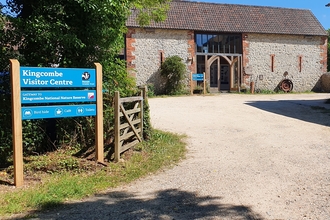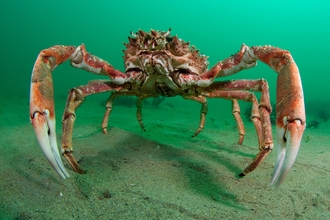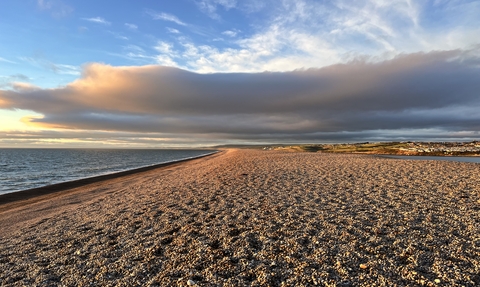
Chesil Bank © Abi Mustard
Chesil and Fleet Mitigation Partnership
Aside from being significant areas for wildlife, Chesil Beach and Fleet Lagoon are popular places for people to visit for a variety of recreational activities including dog walking, angling and birdwatching. In 2019, Natural England and Dorset Council set up the Chesil and Fleet Mitigation Partnership, to look at addressing the pressures of recreational activities that negatively impact the nature reserve.
The partnership comprises of:
- Natural England
- Dorset Council
- Dorset Wildlife Trust
- Chesil and Fleet Nature Reserve (Ilchester Estate)
- Crown Estate
- The Island and Royal Manor of Portland Court Leet
- RSPB
The aim of the project is to raise the conservation profile of Chesil Beach and Fleet Lagoon and to promote nature-friendly recreational practices through engagement and any other suitable infrastructure projects. The partnership project also funds a Community Ranger who is hosted by Dorset Wildlife Trust, based at The Fine Foundation Wild Chesil Centre. They provide a warden presence on site, actively engaging with visitors about the wildlife found along the nature reserve as well as encouraging positive behaviour change.
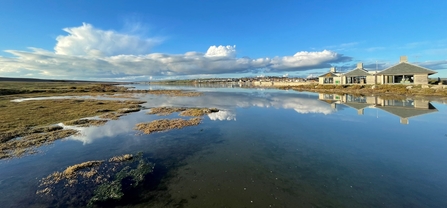
© Sarah Hodgson
Impacts of recreation
All activities have the potential to have an impact on the wildlife and habitats of Chesil Beach and Fleet Lagoon, either through disturbance or damage, however most of it is unintentional. Disturbance to wildlife can be recognised through a range of behavioural changes in the species nearby. Signs that birds or other animals, such as hares, may be disturbed if they are looking in your direction, starting to alarm call, moving away from you or flushing (flying/moving) away completely.
The effects of disturbance on wildlife are harmful as the stress response causes the heart rate to increase, which also increases body temperature, using vital energy stores. In extreme cases, birds and other wildlife will stop using a site altogether. Having to move away often means reduced feeding time for birds who are often reliant on food sources within the mudflats which are only exposed at low tide. This means they are on a timer as to how long their food will be accessible due to rising tides. Some species also migrate and need to build up their energy reserves in preparation, so if they are disturbed too frequently, they might not be able to build up enough energy stores and therefore may not survive their migration.
The habitats around Chesil Beach and Fleet Lagoon are also vital for invertebrates, crustaceans, worms and other species, which are all part of the site’s ecosystem. Digging in the mudflats of the Fleet Lagoon or pulling up plants on the shingle causes damage to these delicate habitats, impacting the quality and abundance of food and habitat used for breeding or shelter.
How you can help
If you are visiting Chesil Beach or Fleet Lagoon, here is how you can help wildlife:
- The nature reserve is home to some exciting birds, plants and animals – look out for them during your visit and find out more by visiting the Wild Chesil Centre.
- Give birds and other wildlife space and avoid the mudflats and foreshore of the Fleet Lagoon.
- Follow signage and requests on the nature reserve.
- Keep to public footpaths to avoid disturbance and damage along the Fleet Lagoon.
- Check in with the Wild Chesil Centre or Chesil and Fleet nature reserve teams to find out where to go for your activity – some may not be permitted on site.
Keeping a respectful distance from wildlife will stop them feeling threatened, which goes for all recreational activities including birdwatching and wildlife photography. If you are visiting Chesil Beach and Fleet Lagoon for birdwatching or wildlife photography, please follow the code of best practice below, which was created in partnership with local birdwatchers and photographers.
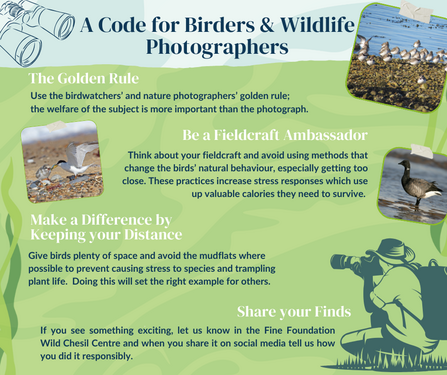
Birders and Photographers' Code
Chesil Beach and Fleet Lagoon
Chesil Beach extends for 18 miles from Portland to West Bay and is one of three major shingle structures in the UK. The beach is made up of approximately 180 billion pebbles which increase in size from West Bay, where they are pea-sized, to Portland, where they are potato sized.
Alongside Chesil Beach lies the Fleet Lagoon, which stretches for eight miles between Ferrybridge and Abbotsbury and is the largest intertidal lagoon of its kind in the UK, connecting to the sea via Portland Harbour. As you go further west towards Abbotsbury, the Fleet is fed by freshwater inputs diluting the salinity, causing the water to be more brackish at the western end.
Chesil Beach and Fleet Lagoon are internationally recognised areas for wildlife conservation, supporting a wide diversity of species, from birds and plants to marine life found within the Fleet Lagoon. The area has been granted several conservation designations as a result, including:
- Site of Special Scientific Interest (SSSI)
- Special Protection Area (SPA)
- Special Area of Conservation (SAC)
- Ramsar wetland
- Marine Protected Area (MPA)
For more information on the wildlife of the reserve, visit the Wild Chesil Centre.







